Nav
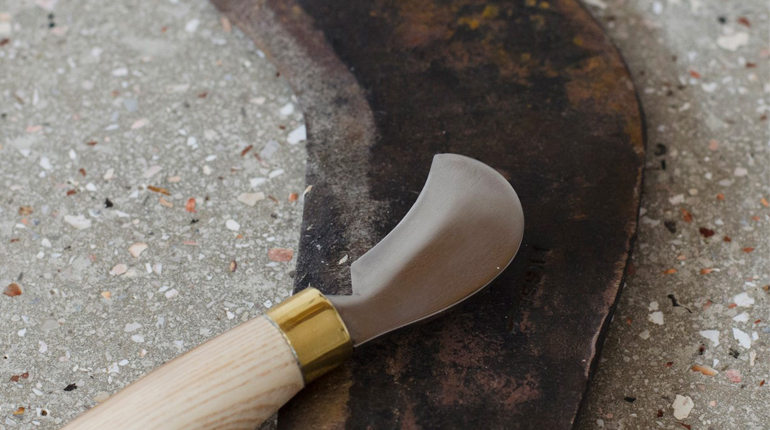
Loads of old billhooks
“The billhook has been ever-present in Philip’s house: his dad uses one to make kindling. We didn’t know much about them, except that each region had their own shape. As we work with vernacular objects, this seemed an interesting point of departure. Our interest was further piqued by ‘A Load of Old Billhooks’, website of collector Bob Burgess. He explains what a billhook is and—perhaps just as important—what it is not.”
Image © the artists
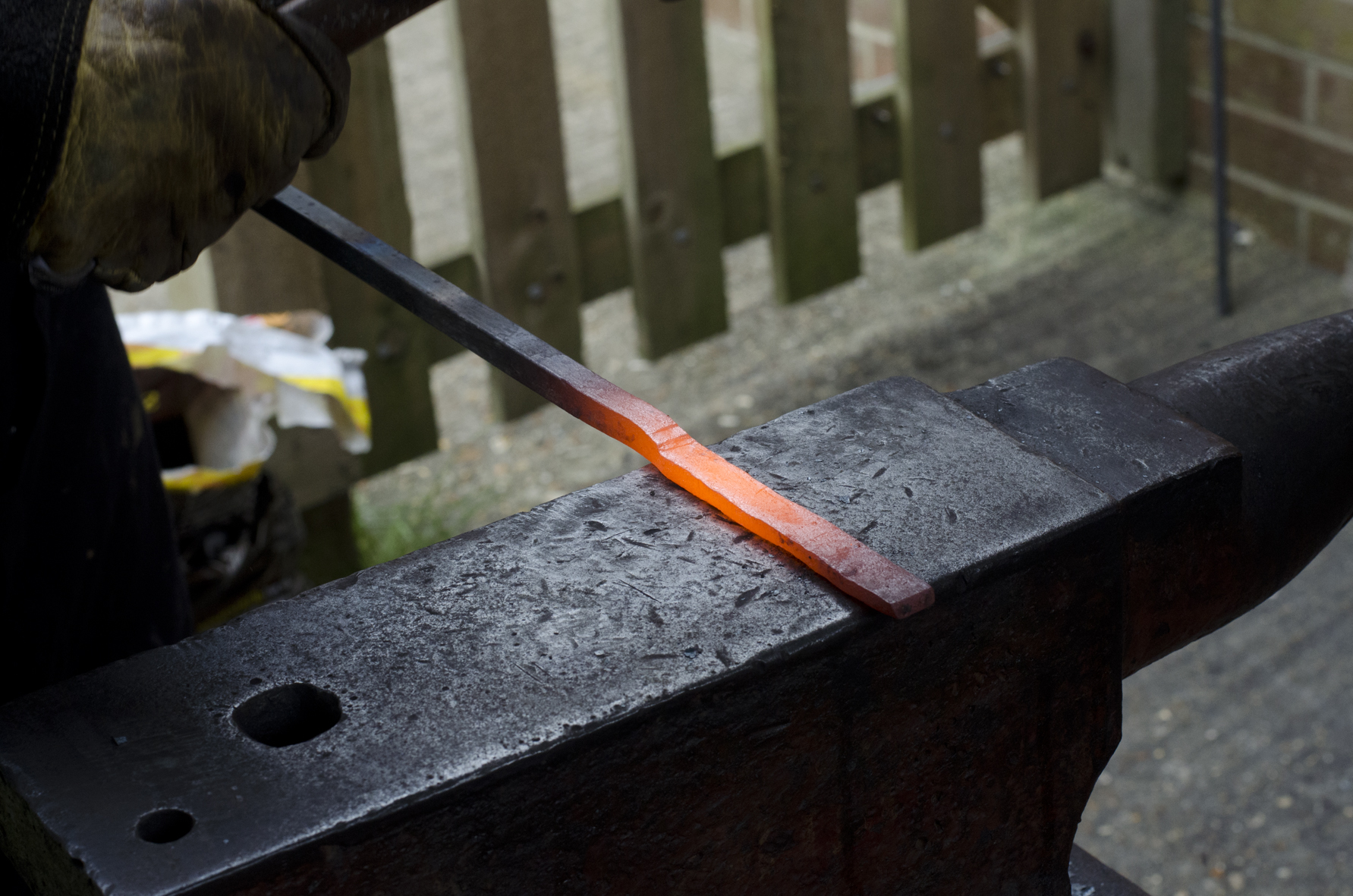
Making a billhook
“We had only a vague idea of how to make a billhook, so approached MERL. Curator Ollie Douglas provided access to the billhooks. Their diversity was not limited to shape. Some were “as new” whereas others had been sharpened many times, the sweep of the blade altered through years of use. Some were industrial processed with handles turned by copy lathe or patent stamped. A fair few were reforged from other tools. There was no uniform approach to construction. We left feeling less certain about what a billhook was, but inspired to delve into the tool with many uses.”
Image © the artists
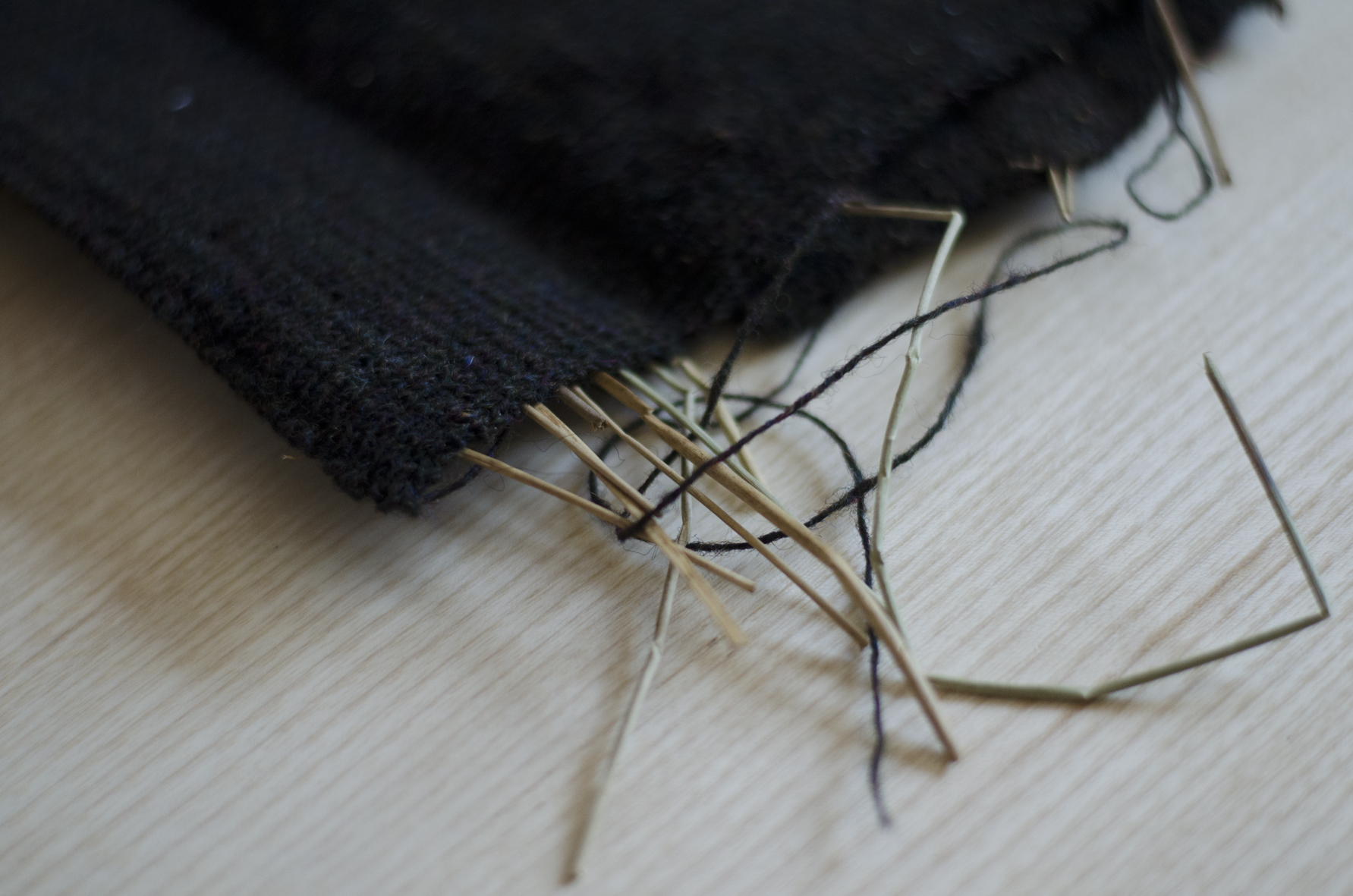
The life before leisure (1)
The modern view of the forest as a place of leisure is quite different to how it would have been seen by people in the past. For them it was a place of work; somewhere to access building materials, heat, and sustenance.
It is in here that we find the billhook, which would have been used for coppicing, pruning, or lopping branches and vegetation. People took away what they needed from the forest. How much has changed in the present day?
Foraged water reeds hand inlayed with machine-knitted wool.
Image © the artists
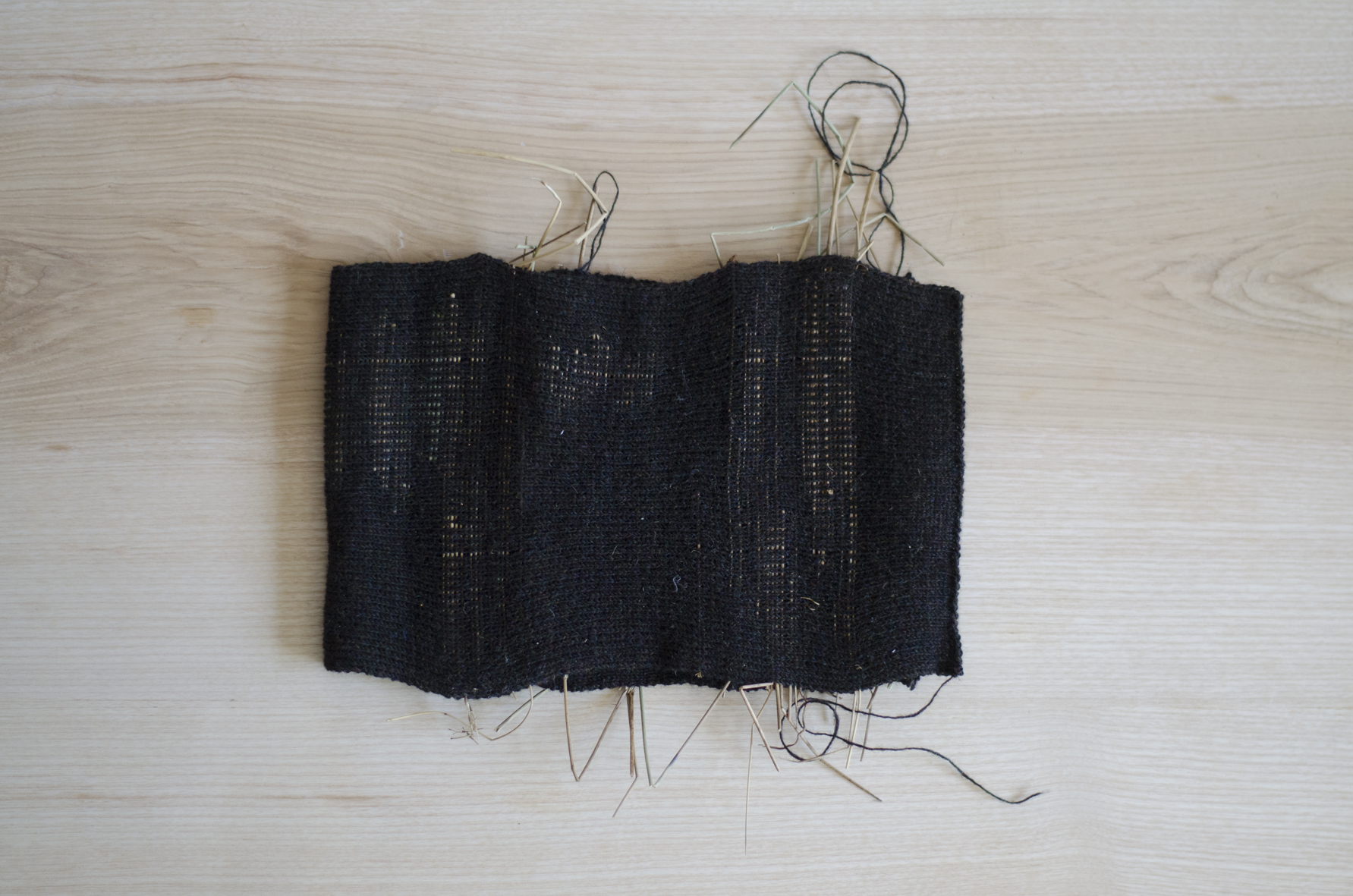
The life before leisure (2)
For many of us, time in the forest helps us to gather our thoughts, feel relaxed and surrounded by nature. Perhaps today’s forests gives back, not in physical sustenance, but in mental nourishment. Next time you are in a forest why not pick up one of nature’s souvenirs, an acorn, conker, or pinecone as a reminder of time well spent?
Foraged water reeds hand inlayed with machine-knitted wool.
Image © the artists
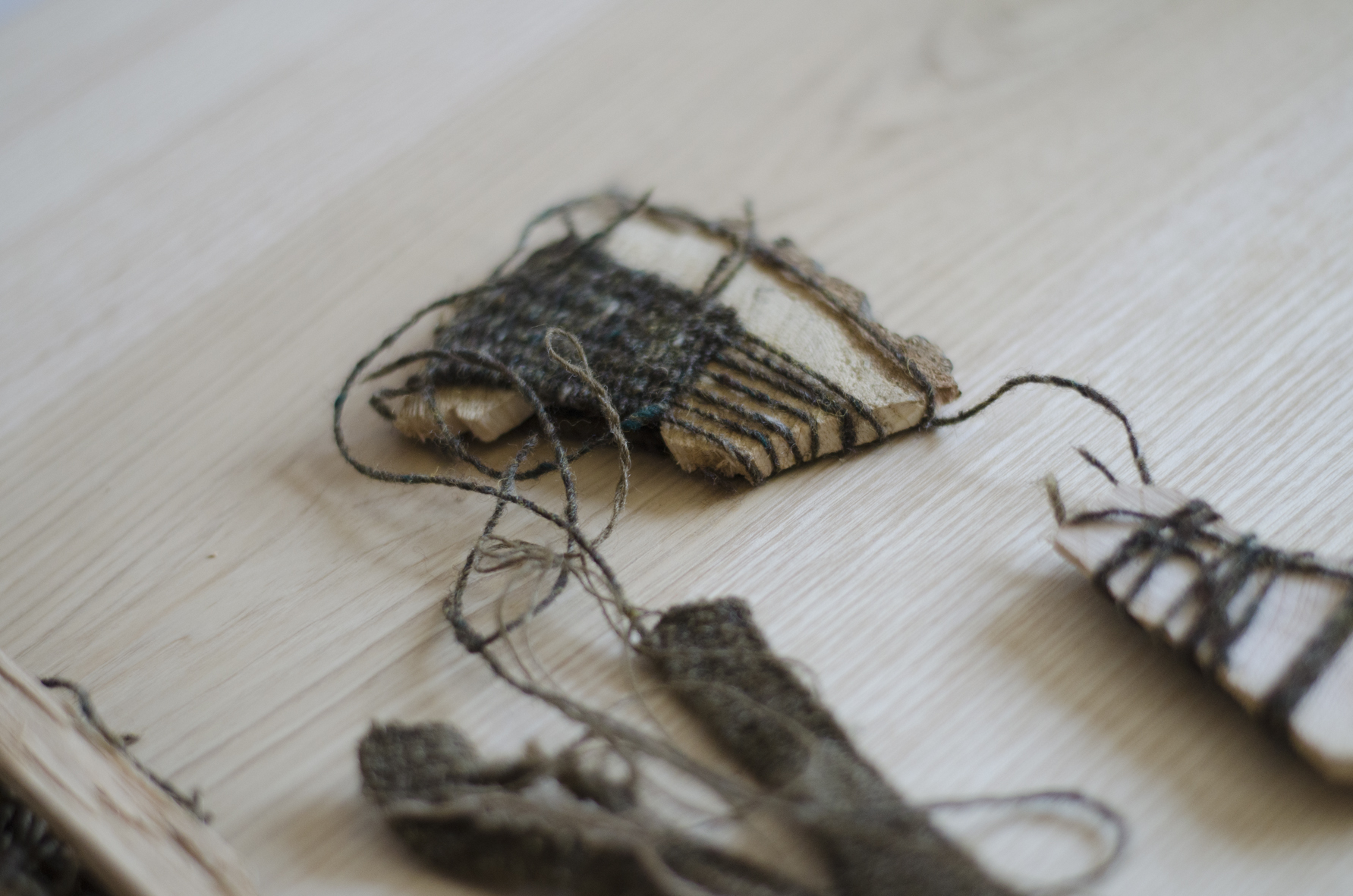
Slash! Hack! Chop! Cleave! Split! Cut! Trim! Prune! (1)
Unlike other edge tools, the billhook is hard to place in a contemporary context. In contrast to a heavy splitting axe, the billhook has a short handle. This limits its impact but enables the user to hold the tool in one hand, while steadying whatever is being chopped in the other.
Machine-wool bound to green ash worked by a billhook
Image © the artists
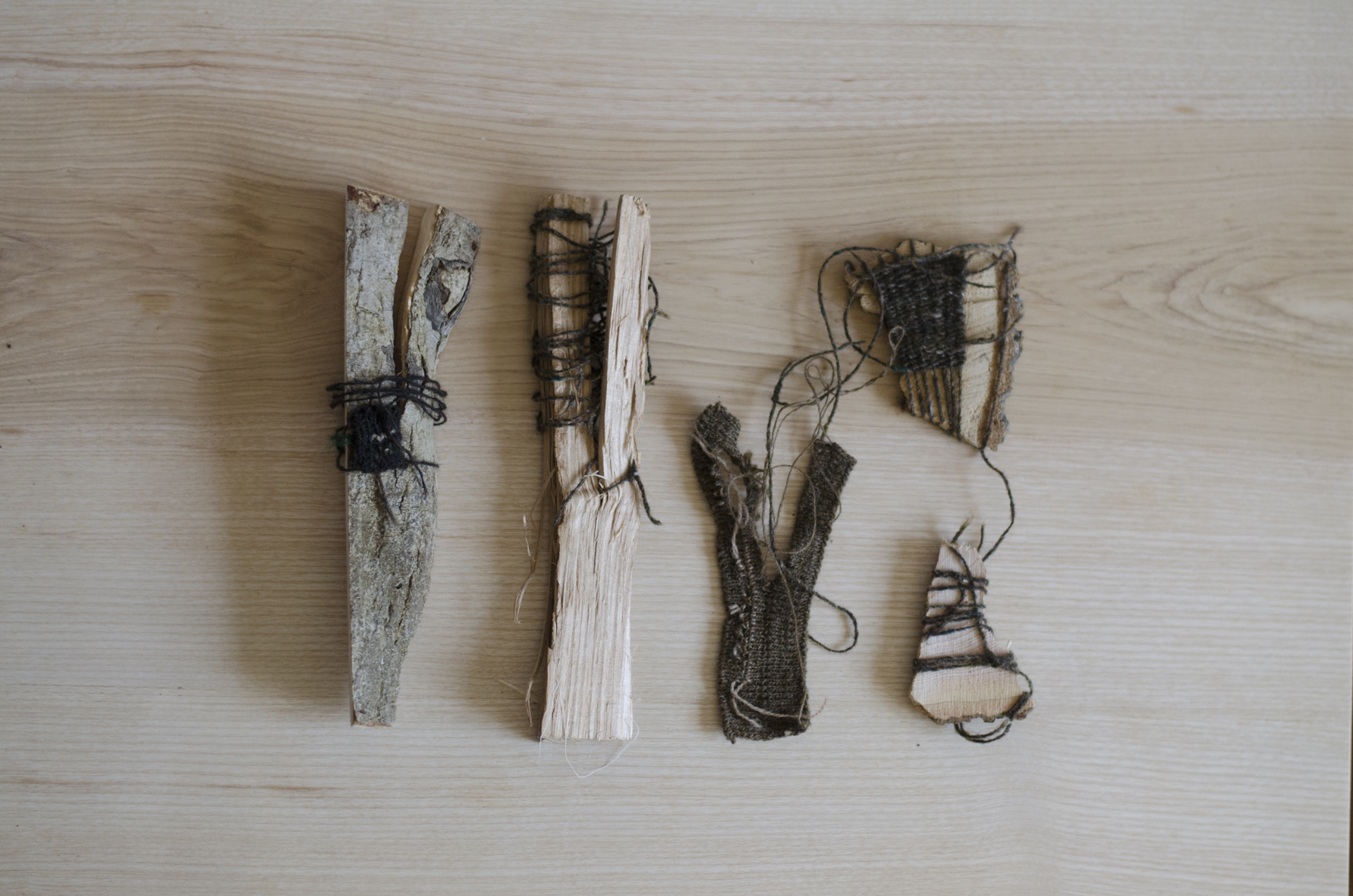
Slash! Hack! Chop! Cleave! Split! Cut! Trim! Prune! (2)
The billhook was used to split saplings to create living hedges. It was used for coppicing; the process of cutting back young trees to stimulate growth. Naturally the fall of such industries has seen a decline in the billhook. But did flexibility and inconsistent usage also contribute?
The blade is straighter than a curved sickle, making it a more exact tool. In the present-day language of craft, the word “exact” could lead us to believe that the billhook was a specialist tool. In fact, it was a common, versatile piece of equipment used in industries that, like the tool itself, have faded into obscurity.
Machine-wool bound to green ash worked by a billhook
Image © the artists

Heat and beat (1)
Accuracy, aim, beat, and rhythm are good words for blacksmithing, the process by which billhooks are made. But the key word is “heat”. Hot iron or steel changes colour from red to orange, and finally to yellow orange. At this point it is at its softest, and ready to start shaping.
Image of one stage in making steel bars, which in turn show three stages of forging a curved blade
Image © the artists
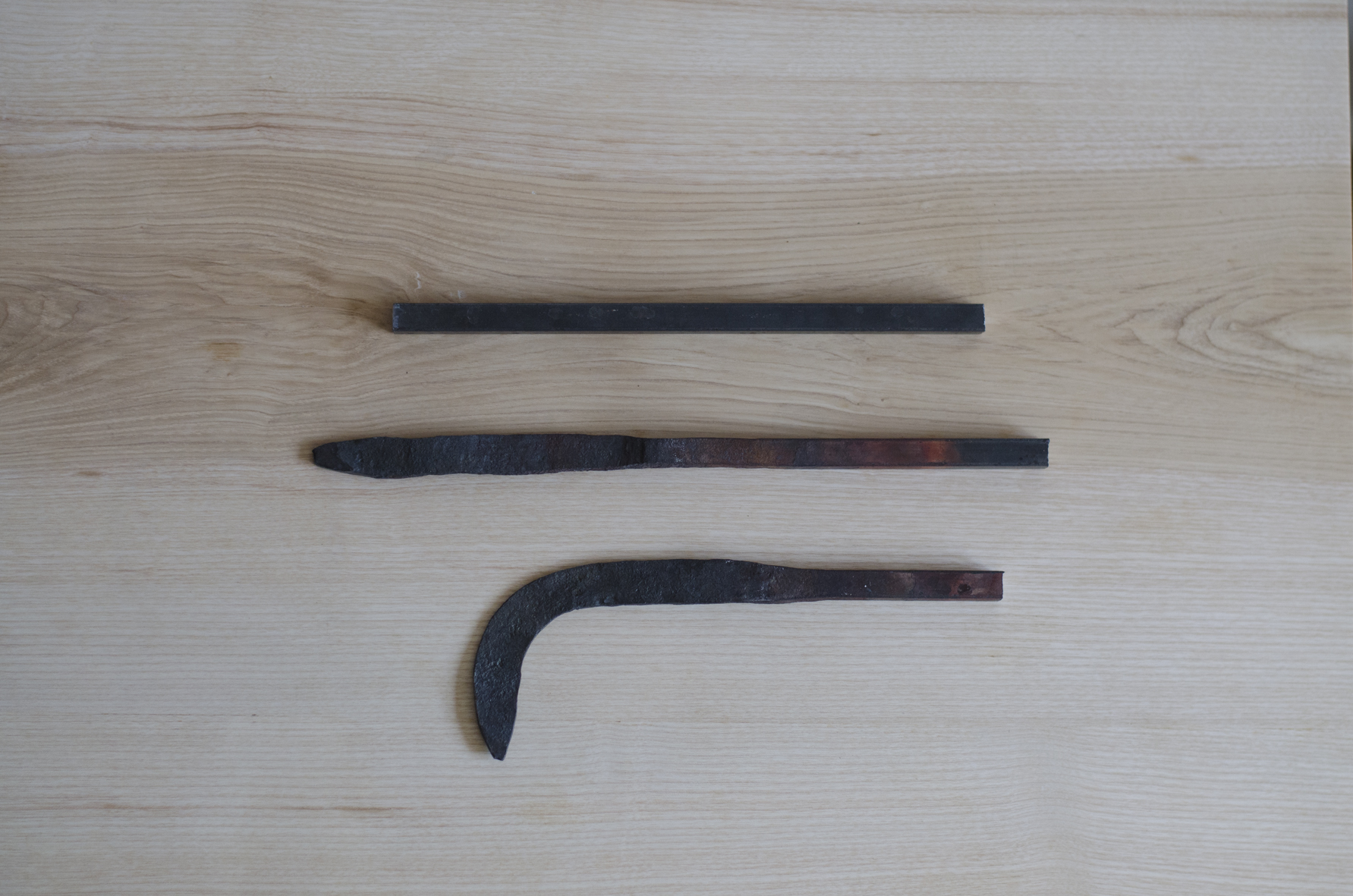
Heat and beat (2)
Three key tools help the shaping process. The first is the anvil, with a flat side for hammering and a rounded horn for shaping. The second is the hammer, used to strike the hot metal on the anvil. The third is the body, providing energy, motion, and technique; hammering hot metal on the anvil, gradually moving it into the desired shape.
Steel bars showing three stages of forging a curved blade
Image © the artists

A shift in the conversation (1)
Craft was a conversation with time. Makers focused on repairing and repurposing existing objects. The amount of time it took to make one tool meant it was barely profitable. Objects made hundreds of years earlier could be skilfully manipulated to extend their useful life.
Prior to the industrial revolution, many things were made from other objects. This was upcycling, adding value to original material. It was also downcycling; breaking an object down, and reusing the material until it disintegrated. Such renewal is shown by billhooks made from old farriers’ rasps.
Deconstructed file, handmade paring knife, and the mass-produced knife that informed it
Image © the artists

A shift in the conversation (2)
In the past, new materials were costly, so repurposing was the norm. Modern make-do-and-mend ideas echo this sentiment but access to new materials undermines the desire or need to repurpose or to mend. Craft in 2023 is a conversation with creativity. New materials offer the neatest and most direct path to realise a creative vision.
Deconstructed file, handmade paring knife, and the mass-produced knife that informed it
Image © the artists
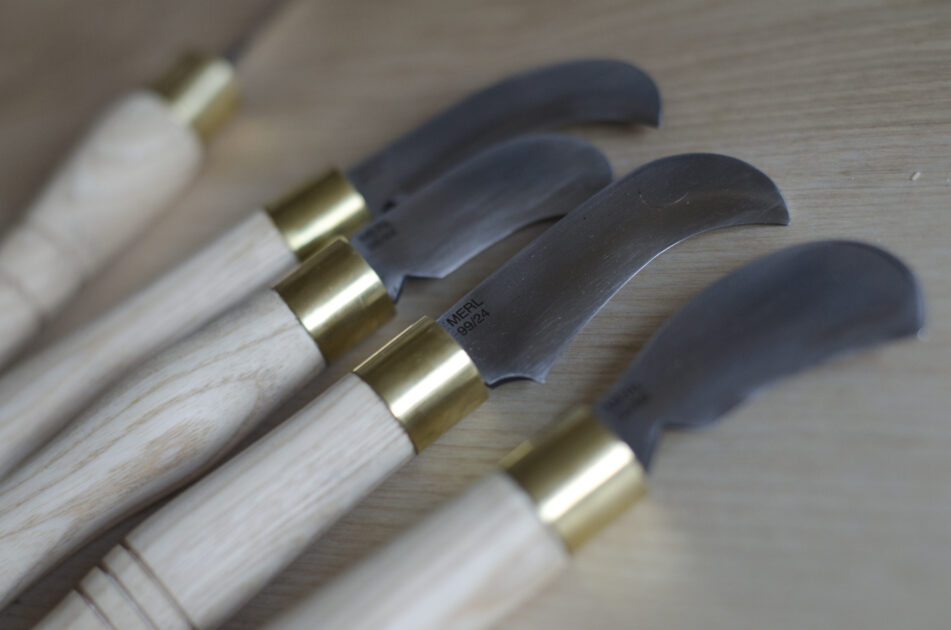
A past conversation (1)
It’s hard to say when the billhook was recast from tool to artefact. Perhaps when access to new materials became easier. Maybe when forests became leisure parks. Perhaps when hedgerows slipped into decline.
Although still found in specialist toolkits, and enthusiast’s workshops or collections, for many others this tool of many uses became useless. The once ubiquitous billhook now seems foreign. In truth, they make poor artefacts; with no precious metals or familiar logos to jog memories. Instead they lurk among other old things, too benign and dowdy to be displayed, too heavy and sharp to be handled regularly.
Domestic pruning knives each inspired by a MERL billhook
Image © the artists
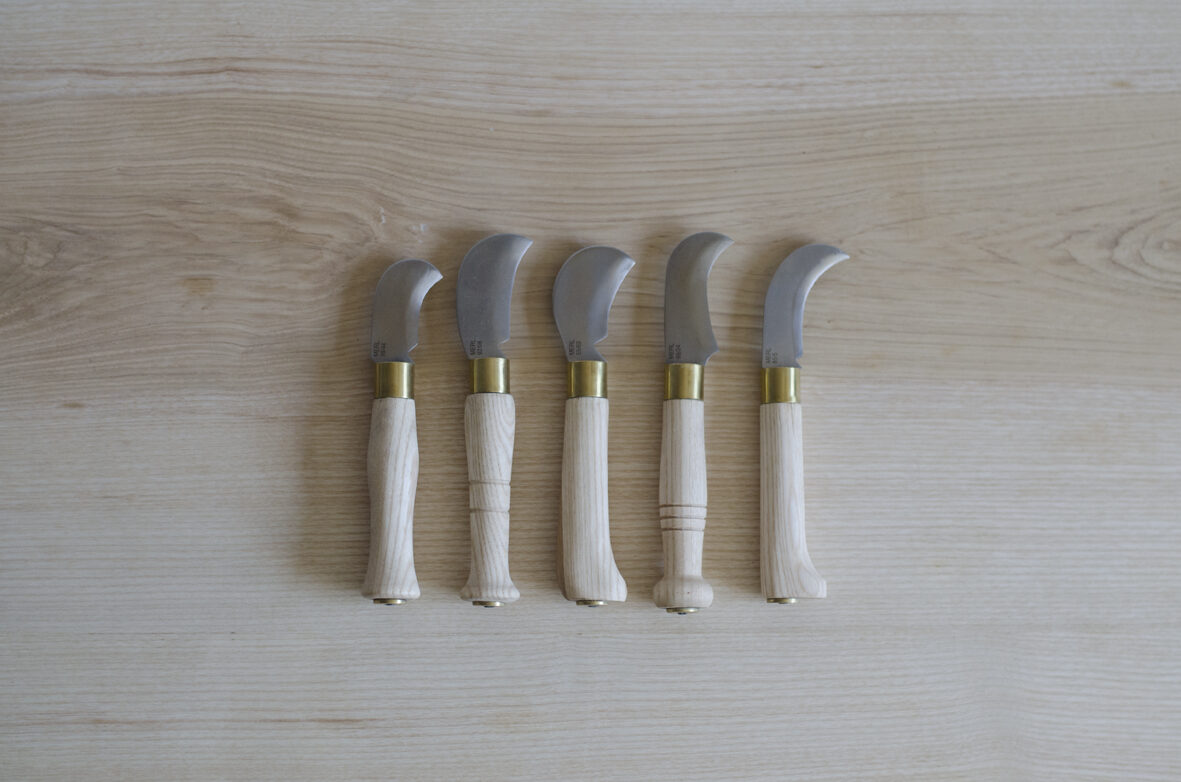
A past conversation (2)
Billhooks even defy classification. When is a billhook a bean hook, serpette, or sickle? Is it a “Kentish billhook” because it is a billhook from Kent? Does its shape say anything about place? By asking such questions, maybe we catch a snippet of that past conversation between material, maker, user, and use.
Domestic pruning knives each inspired by a MERL billhook
Image © the artists

A Billhook Renaissance
In response to the project, billhook expert Bob Burgess responds to the possibility that the billhook is now useless:
‘Oh no it’s not! With the resurgence of interest in conservation the billhook has seen a new lease of life in coppice work and hedge-laying. It even has its own dedicated social media groups for specialist enthusiasts. It remains common in many European countries, as well as in Africa and Asia.
Philip and Alice explored some 20 variations held by The MERL, but there were hundreds of regional variations in shape in the UK alone; most counties had local edge tool makers, and there were significant industrial makers in the Midlands and the West Country.’
MERL 96/107
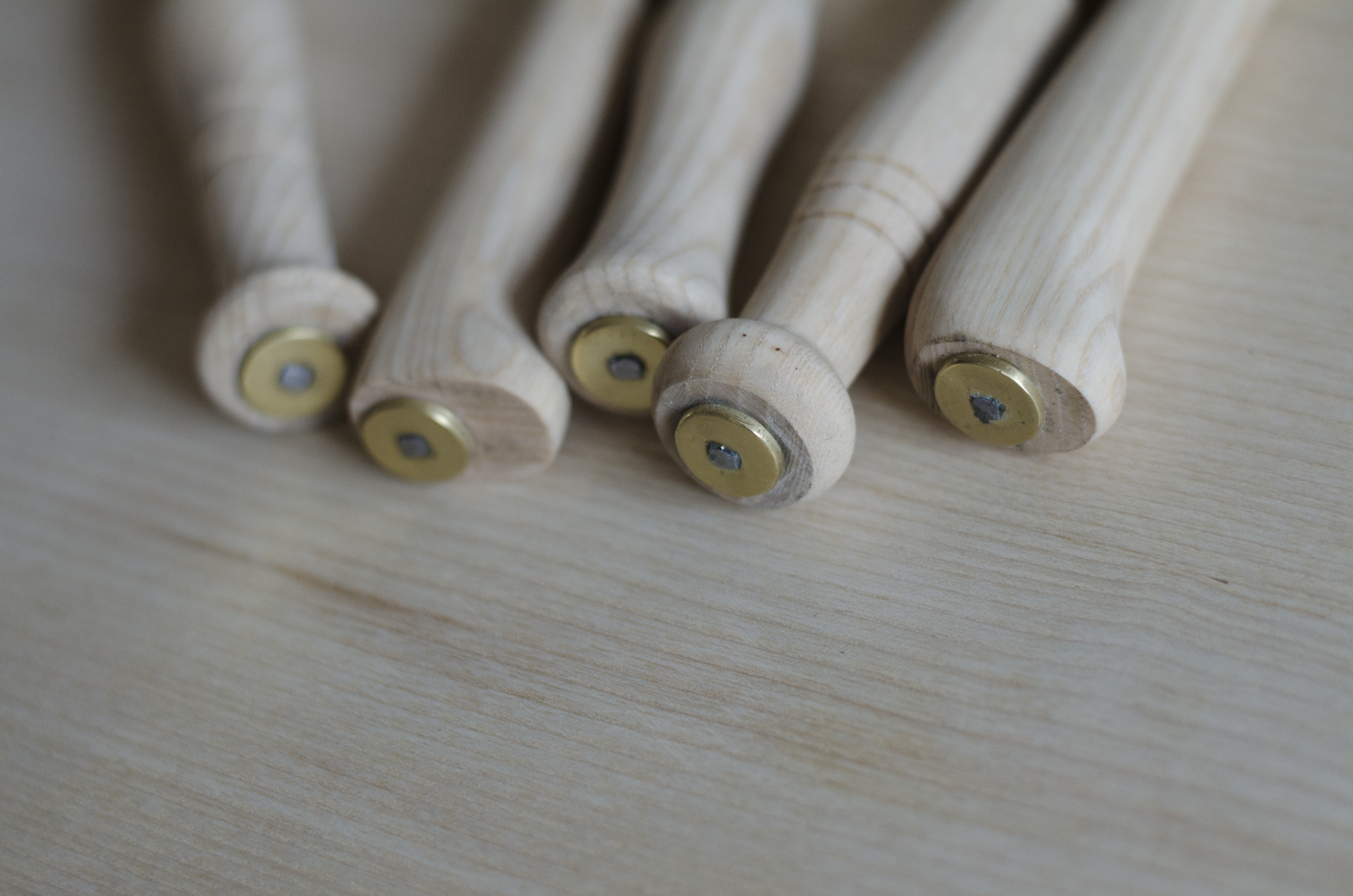
Further Reading
To find out more about billhooks and the ideas behind the project see:
- Journal article by Alice and Philip (paywall)
- Summary of the project on Philip’s website
- Bob Burgess’ website, A Load of Old Billhooks
- Database records for billhooks in The MERL
The MERL holds over 20 variations of billhook. Each varies slightly in size and shape. The Monmouth billhook has a wide blade “single cutting edge” and pistol-shaped handle. The Sheffield type is a “heavy billhook” with a wooden handle and ferrule. Several examples were made from other tools, such as rasps or files, showing the value placed on high quality metal and thriftiness.
Image © the artists